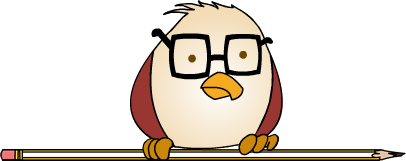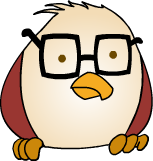Crickler loading ...


Begin with an easy clue (as you would in a crossword puzzle). To enter the answer, select a square with your mouse and start typing:
1. Pale pink highlights the clue you are working on:
2. The letter you type goes into the square with the blinking red cursor.
3. Letters entered appear in pencil (gray) 
4. Use space or Backspace to remove letters. Use the arrow keys o move around.
As you fill the answer to one clue, you fill in letters in other clues (as in a crossword):
1. As you type, linked letters fill in automatically in other answers.
2. Light red shows where these linked letters will go.
3. you can explore how squares are linked by using your mouse.
4. When you mouse over a linked square, it turns blue.
5. To see the links look for other squares that turn blue at the same time.
Vowels and spaces between words:
1. Spaces between words appear as dark grey squares. Typing space is optional.
2. Squares with a pale gray 'v' contain vowels or the letter Y.
3. A small 'n' indicates a number.
Helpful features:
1. Linked letters turn black and lock when you enter a correct answer.
2. The final clues are lit in yellow.
3. If you get totally stuck, click on WordBird for a hint!
Other useful keystrokes and buttons:
1. Ctrl by itself takes you to the next empty square (very useful).
2. Delete deletes a whole answer, except for locked (black) letters.
3. Enter takes you to the next clue.
F1 == Help, F7 == Get a Hint
F8 == Reset crickler, F9 == Change case
Sounds  Pronunciation
Pronunciation 
Answers appear in upper and lower case by default
Choose UPPER CASE ONLY below to show answers in all upper case
UPPER CASE ONLY
 Serif
Serif
 Sans Serif
Sans Serif

tiny
 Show more clues on screen + avoid splitting words
Show more clues on screen + avoid splitting words
BIG
 Useful on small screens or if you want larger text
Useful on small screens or if you want larger text
The text size may also be varied by making the web page wider or narrower. The smaller the text size, the more clues will be visible
When this option is ON (default), the program hunts for the next clue -- after a short delay to let you finish typing
Auto-Advance

With Perpetual Cricklers, when you finish one puzzle, a new one becomes available. This option lets you set the size and a key that lets you recall puzzles you have played before
No. of Clues (5-99)
Handle (e.g. "Peter")
Handicap*
* Each type of Perpetual crickler has a separately computed handicap
US English
 British English
British English

(changing this setting may reset the current crickler!)
Crickler adapt to your individual skill level. Each player is assigned a "handicap" which is a number from 0 to 36 and which is set initially at 28. It works like Golf, the lower your handicap, the greater the challenge.
If you perform better than your handicap level, your handicap is lower for the next time you play -- making your next puzzle a little harder. If you take too long or abandon a puzzle your handicap will go up -- making your puzzle a little easier.
Some puzzles are inherently easier while others are harder so we have given different groups separate handicaps. For groups other than the main group, the handicap is tinted to show which group they belong too.
The panel below shows your current handicap and lets you modify it before you start solving a puzzle.
Handicap:
(changing your handicap resets the current crickler!)
Handicap values must be between 36 (easiest) and 0 (hardest)
Cricklers are a new type of word puzzle. We set out to totally re-invent the crossword puzzle for the computer age. Traditional crossword puzzles are incredibly successful but they have several serious drawbacks: (1) They are difficult to construct, (2) Most words are short and often silly - chosen only because they fit, (3) Matching clues to numbers is a distraction, and (4) A given puzzle is usually either too easy or too hard.
Crickler solve all of these problems while retaining the essence and feel of a traditional crossword puzzle. Cricklers adapt: they become easier or harder depending on the skill of the solver. Words are chosen by the designer -- the computer takes care of fitting them together. Clues and answers sit side by side.
Crickler use upper and lower case correctly and can handle numbers, symbols, and accented letters. You can see which letters are vowels, and you get a reassuring sound when you complete a clue correctly.
We have re-invented the crossword puzzle and we hope you enjoy the results.

Barbara and Michael Crick run a small software company near Seattle.


Don't recompute my handicap

Take a Survey
Post a Comment
Close